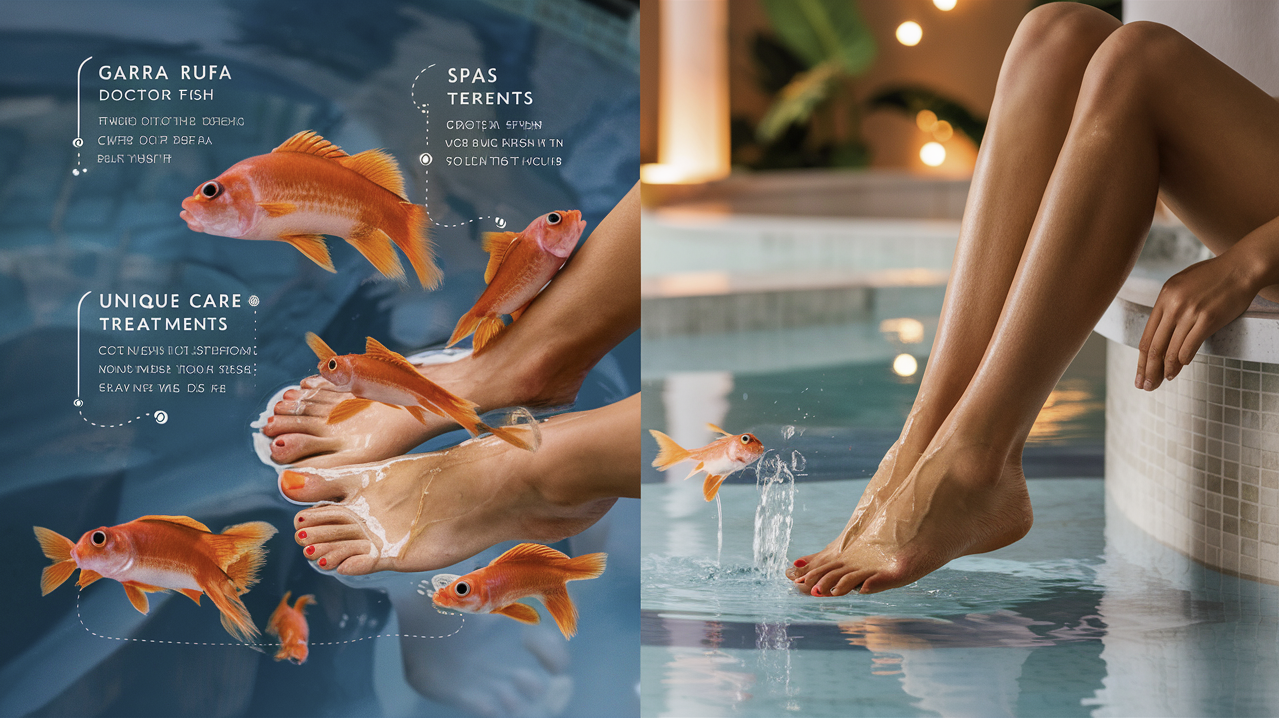Table of Contents
Introduction
Imagine dipping your toes into a serene spa, and suddenly, tiny fish begin to gently nibble at your feet, leaving them fresh and clean. These little wonders are none other than Garra Rufa fish, commonly known as Doctor Fish. Known for their role in spa treatments and their unique care needs, Garra Rufa fish are fascinating creatures to keep as pets. In this article, we’ll explore everything you need to know to properly care for these gentle nibblers, from tank setup to dietary needs and health considerations.
Setting Up the Ideal Tank
Setting up a suitable tank is the cornerstone of ensuring your Garra Rufa fish thrive. Here’s what you need to consider:
Tank Size and Environment
- Tank Size: Garra Rufa fish are active swimmers and require ample space. A minimum of a 40-gallon tank is recommended for a small group.
- Water Quality: Stable water quality is paramount. Maintain a pH level between 6.5 and 7.5 and keep the water temperature between 77°F to 86°F (25°C to 30°C).
- Filtration: Invest in a high-quality filtration system to ensure the water remains clean and oxygenated.
- Substrate and Decorations: Use a soft sand substrate to mimic their natural habitat. Include rocks, driftwood, and low-light plants to provide hiding spots and enhance the environment.
“Garra Rufa fish thrive in a well-maintained tank with stable water conditions and plenty of room to swim and explore.”
Dietary Needs and Feeding Schedule
Proper nutrition is another critical component of caring for Garra Rufa fish. They require a balanced diet to stay healthy and active.
What to Feed Your Garra Rufa Fish
- Algae and Biofilm: In the wild, Garra Rufa fish feed on algae and biofilm. While they will naturally graze on any algae present in the tank, it’s essential to supplement their diet.
- Commercial Fish Food: Use high-quality sinking pellets or wafers designed for omnivorous fish. Look for products rich in proteins and essential vitamins.
- Vegetables: Supplement their diet with blanched vegetables like zucchini, cucumber, and peas. These provide essential nutrients and variety.
Feeding Tips
- Frequency: Feed your Garra Rufa fish once or twice a day, ensuring they consume all food within a few minutes to avoid overfeeding.
- Quantity: Offer small portions to prevent uneaten food from contaminating the water.
Health and Disease Prevention
Keeping your Garra Rufa fish healthy involves regular monitoring and preventative care.
Common Health Issues
- Fin Rot: Often caused by poor water quality. Signs include frayed or discolored fins. Remedy by improving water conditions and using a medicated treatment if necessary.
- Ich: Presents as white spots on the body and fins. Treat with over-the-counter ich medication and raise the tank temperature slightly to speed up the cure.
Preventative Measures
- Quarantine New Fish: Always quarantine new fish for at least two weeks before introducing them to your main tank. This practice helps prevent the spread of diseases.
- Regular Water Changes: Perform weekly water changes of about 20% to maintain water quality and remove waste.
- Observation: Regularly observe your fish for signs of stress, unusual behavior, or physical changes. Early detection of issues can prevent severe health problems.
“Consistent monitoring and preventative care are key to maintaining the health and wellbeing of your Garra Rufa fish.”
Breeding Garra Rufa Fish
Breeding Garra Rufa fish in captivity can be challenging but rewarding.
Breeding Conditions
- Separate Breeding Tank: Use a dedicated breeding tank with conditions mirroring the main tank.
- Temperature and Water Quality: Maintain optimal water quality and a slightly higher temperature (around 82°F or 28°C) to encourage spawning.
Breeding Process
- Pair Selection: Choose healthy, mature fish for breeding. Males can be identified by their slimmer body and slightly larger pectoral fins.
- Spawning: Introduce the pair into the breeding tank. Once eggs are laid, remove the adults to prevent them from eating the eggs.
Conclusion
Caring for Garra Rufa fish requires attention to detail, a suitable tank environment, proper nutrition, and diligent health monitoring. By understanding their specific needs and taking the necessary steps to provide a nurturing environment, you can enjoy the company of these fascinating creatures while ensuring they stay healthy and happy.
“Proper care and attention to the specific needs of Garra Rufa fish will not only keep them healthy but also enhance your aquarium experience, offering you both beauty and functionality.”
Feel free to leave a comment or question below if you need more tips or have any experiences to share! Happy fishkeeping!
For more information on fish care, you may find these resources helpful:
- Fishkeeping World: Comprehensive guides for various fish species
- Aquarium Co-Op: Articles and forums discussing fish care and tank maintenance
Remember to always consult multiple sources to ensure you’re providing the best care possible for your aquatic friends.
